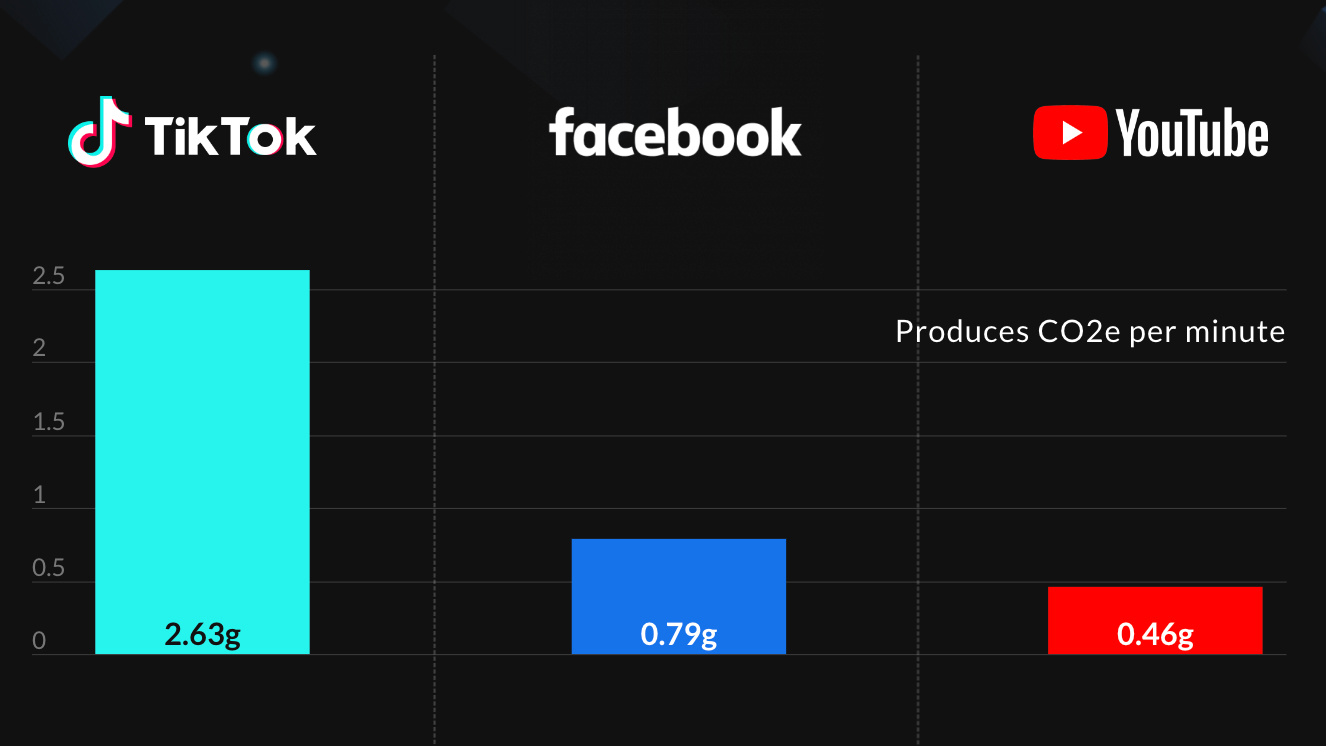TikTok emits 3x more carbon than Facebook per minute, says study
A recent estimate suggests social media platforms differ massively in terms of their environmental output, but will users care?

Social media platforms have become an integrated part of many people's daily lives and routines. As well as using them for personal reasons, the platforms and apps can be incredibly important for photographers to share their work and do business (even if we do moan about them a lot).
While more recently, users, experts, and even ex-employees have questioned the mental health consequences of using social media so regularly, most of us wouldn't think to consider their environmental impact.
But a recent article by BanklessTimes.com has aimed to compare how the biggest social media platforms – including YouTube, TikTok, Facebook, and Instagram – are affecting the environment, in terms of their CO2 emissions. These emissions come from the amount of energy that it takes to store content, and the most impactful news feed of any social media network in terms of carbon dioxide emissions is said to be Tik Tok – because it involves constantly loading videos.
Although Instagram is perhaps of most interest to photographers, there was a greater focus on TikTok, Facebook, and YouTube in the comparison.
How were the numbers calculated?
"Both Facebook and TikTok produce enough CO2e each year to fly the entire population of London to New York and back"
The BanklessTimes article uses a source from Statista to come up with its numbers, from an original study that "measured the news feed of the 10 most popular social media applications." From this source, BankLessTimes created the infographic below.
We can't be completely sure of the accuracy of the numbers given that the study is from 2021 and we don't know how testing was carried out, but it's definitely interesting to think about social media platforms in a new light.
Which social media platform is the least environmentally friendly?
It's difficult to draw solid conclusions about which social media platform fares worse when it comes to environmental impact. The original story from BanklessTimes focused on carbon emissions, but there are many other factors that make up an organization's environmental footprint.
Get the Digital Camera World Newsletter
The best camera deals, reviews, product advice, and unmissable photography news, direct to your inbox!
We also have to take into account that the story was using estimates for many different calculations: "While there is no reliable data on TikTok or Youtube’s Daily Active Users, there is data on their monthly user base. If we take a conservative estimate that roughly a third of these users might use each platform daily, we can produce a reasonable estimate of their overall carbon emissions," says the writer
Toby McInnis.
Will knowing the environmental impacts change the way we use social media?
Jonathan Merry, CEO of BanklessTimes.com agrees that the majority of users "don’t think about social media as an environmental issue. But this research demonstrates how impactful it can be – and how our choice of which platforms to use might have a large impact on global emissions."
Would knowing the environmental impact of a social media platform stop you from using it? I can't see YouTubers suddenly leaving, given that there are (unless I'm wrong) no "green alternatives, but again, the conversation is interesting, and one which I think will become more important as we navigate our usage – as photographers and videographers and just humans – in the future.
Check out the full infographic from BanklessTimes.com below.
You might like to learn about the social media platform Vero, plus the best camera for TikTok and the best cameras for Instagram.

Lauren is a writer, reviewer, and photographer with ten years of experience in the camera industry. She's the former Managing Editor of Digital Camera World, and previously served as Editor of Digital Photographer magazine, Technique editor for PhotoPlus: The Canon Magazine, and Deputy Editor of our sister publication, Digital Camera Magazine. An experienced journalist and freelance photographer, Lauren also has bylines at Tech Radar, Space.com, Canon Europe, PCGamesN, T3, Stuff, and British Airways' in-flight magazine. When she's not testing gear for DCW, she's probably in the kitchen testing yet another new curry recipe or walking in the Cotswolds with her Flat-coated Retriever.
